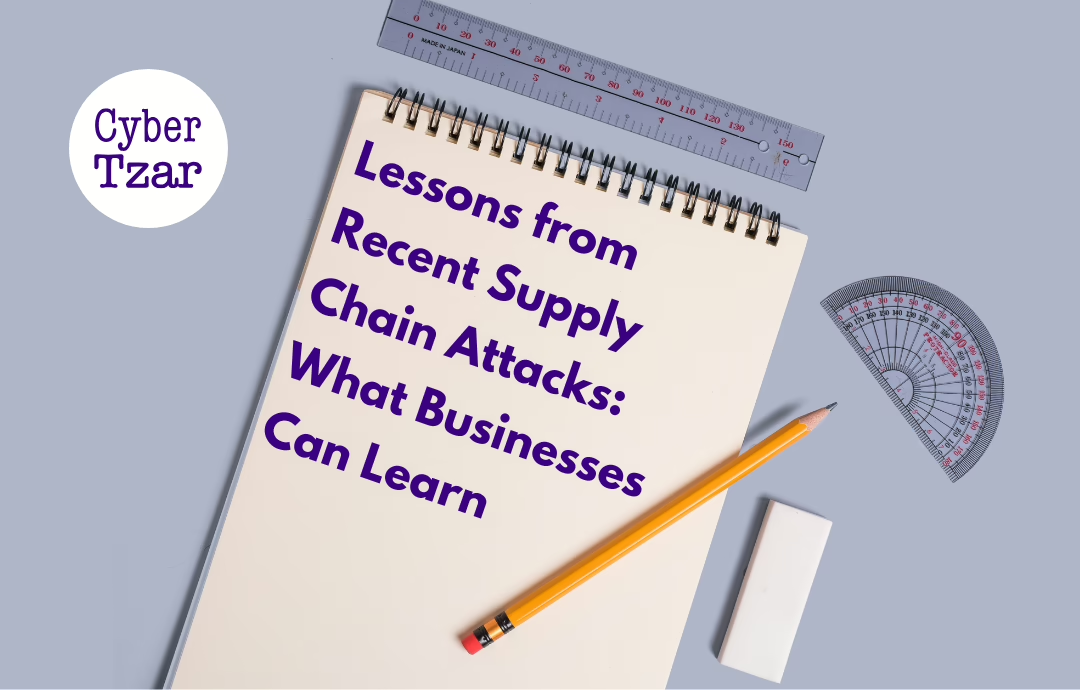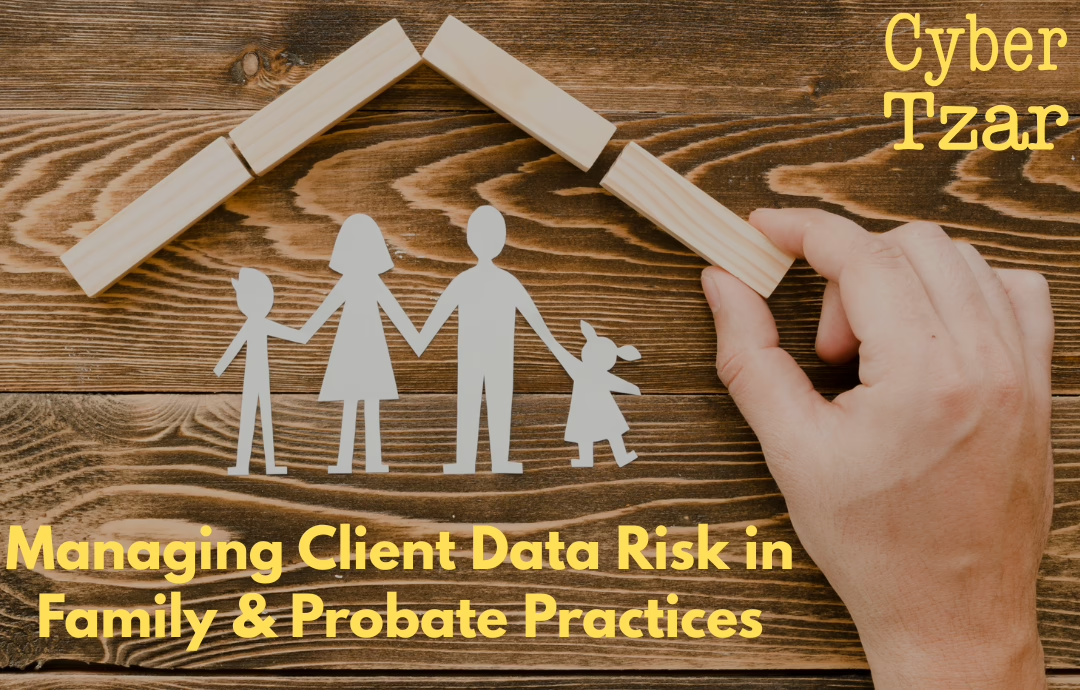Introduction
Supply chain attacks have become one of the most damaging cybersecurity threats in recent years. Instead of targeting large organisations directly, cybercriminals infiltrate smaller third-party vendors, IT service providers, and software suppliers, using them as a gateway to compromise multiple businesses at once.
From ransomware attacks on logistics firms to backdoor compromises in widely used software, these incidents demonstrate the urgent need for businesses to strengthen supply chain security.
This article explores major supply chain attacks in recent years, the lessons businesses can learn, and how organisations can mitigate third-party risks.
1️⃣ Why Supply Chain Attacks Are Increasing
📌 62% of breaches originate from third-party vulnerabilities—attackers exploit weak links in the supply chain.
📌 Ransomware groups now target supply chains strategically to maximise disruption and extort multiple victims at once.
📌 Remote work and cloud adoption have increased third-party software dependencies, expanding the attack surface.
💡 Supply chain attacks are becoming more sophisticated—businesses must adapt their security strategies accordingly.
2️⃣ Key Lessons from Recent Supply Chain Attacks
🔹 Case Study 1: The SolarWinds Hack (2020-2021)
What Happened?
Attackers inserted a malicious backdoor (Sunburst) into SolarWinds Orion, an IT management software used by thousands of companies and government agencies worldwide. This led to:
✔ 18,000 businesses unknowingly installing compromised updates.
✔ Attackers gaining remote access to corporate and government networks.
✔ Months-long undetected access, as the malware remained dormant before activation.
💡 Lesson Learned:
✅ Monitor software supply chains carefully—even trusted vendors can be compromised.
✅ Use endpoint detection and response (EDR) to detect abnormal software behaviour.
✅ Segment critical IT systems to prevent widespread infiltration.
🔹 Case Study 2: Kaseya Ransomware Attack (2021)
What Happened?
REvil ransomware attackers exploited a zero-day vulnerability in Kaseya VSA, a remote IT management tool used by managed service providers (MSPs). This resulted in:
✔ Over 1,500 businesses being infected with ransomware.
✔ Attackers demanding $70 million in ransom.
✔ Widespread IT service disruption for SMEs across multiple industries.
💡 Lesson Learned:
✅ Third-party tools must be patched immediately—delayed updates create vulnerabilities.
✅ Zero-trust security models can limit lateral movement if an attack occurs.
✅ Ensure third-party vendors follow robust security practices before onboarding them.
🔹 Case Study 3: Log4j Vulnerability (2021-2022)
What Happened?
The Log4Shell vulnerability in Log4j, a widely used Java-based logging library, allowed attackers to remotely execute code on millions of devices.
✔ Hackers scanned the internet for vulnerable systems within hours of disclosure.
✔ Critical infrastructure, cloud services, and enterprise apps were all affected.
✔ Many organisations struggled with patching delays, increasing exposure.
💡 Lesson Learned:
✅ Use software composition analysis (SCA) tools to track open-source dependencies.
✅ Apply security patches as soon as vulnerabilities are disclosed.
✅ Continuously monitor systems for unexpected behaviour, even in trusted software.
3️⃣ The Most Common Supply Chain Security Weaknesses
📌 1. Weak Vendor Security Practices
Many businesses trust their suppliers blindly, assuming they follow strong cybersecurity standards.
🛡️ Mitigation Strategies:
✔ Assess third-party security controls before onboarding.
✔ Require vendors to comply with security standards like ISO 27001, Cyber Essentials, or NIST.
✔ Conduct regular security audits on critical suppliers.
📌 2. Lack of Third-Party Risk Visibility
Organisations often don’t track the full extent of their digital supply chain, making it difficult to detect risks.
🛡️ Mitigation Strategies:
✔ Maintain an inventory of all vendors, suppliers, and third-party services.
✔ Use automated risk monitoring tools to detect vulnerabilities in supplier networks.
✔ Limit supplier access to only necessary systems.
📌 3. Failure to Monitor Software Dependencies
Many businesses use open-source libraries and third-party software without checking for security flaws.
🛡️ Mitigation Strategies:
✔ Regularly scan for vulnerabilities in third-party software.
✔ Adopt secure software development practices (DevSecOps).
✔ Require suppliers to disclose security updates and patches proactively.
4️⃣ How Businesses Can Strengthen Supply Chain Security
✅ 1. Implement Strong Third-Party Risk Management
- Establish clear security requirements for suppliers before contracts are signed.
- Require vendors to undergo cybersecurity audits and penetration testing.
- Ensure suppliers have incident response plans in case of a breach.
✅ 2. Use a Zero-Trust Security Model
- Never automatically trust external vendors—apply least privilege access.
- Segment networks to limit vendor access to only what’s necessary.
- Continuously monitor supplier activity for signs of compromise.
✅ 3. Monitor Third-Party & Open-Source Software Risks
- Track all dependencies in your software stack (e.g., Log4j lesson).
- Apply security updates immediately when vulnerabilities are disclosed.
- Use software bills of materials (SBOMs) to track which components are in use.
✅ 4. Improve Incident Response for Supply Chain Attacks
- Develop a third-party breach response plan.
- Require immediate breach notifications from vendors.
- Conduct regular cybersecurity drills to test response procedures.
💡 Proactive supply chain security is critical—waiting until an attack happens is too late.
Final Thoughts: Supply Chain Security is a Business Imperative
Modern businesses are only as secure as their weakest vendor. The rise of supply chain attacks means that organisations must go beyond basic compliance and actively monitor, assess, and secure their supplier ecosystems.
🔹 Key Takeaways for Businesses:
✔ Supply chain attacks are increasing—third-party security must be a priority.
✔ Businesses must actively assess and monitor supplier security controls.
✔ Zero-trust security and strong vendor risk management reduce exposure.
✔ Incident response plans should include third-party breach scenarios.
By adopting these best practices, businesses can protect themselves from cascading supply chain attacks, reduce cyber risk, and ensure long-term operational resilience.
📢 What’s Next?
💡 Next in the series: “MOD Procurement & Cybersecurity: The 2024 Playbook” (w/c 19 May).
Would you like a supply chain cyber risk assessment? Get in touch today. 🚀

